Let there be a firmament in the midst of the waters
I have written quite a few posts on the firmament which YHWH created on Day Two of Creation and I know that many readers have been interested in these posts. I have accumulated some very interesting information pertaining to the firmament which I would like to document in this post.
In a previous post, I referenced the Hebraic oral teachings which were carried through the ages and taught the Hebrews about their history – I suppose as a kind of extra-biblical document. It was Louis Ginzberg who documented these in his book Legends of the Jews, published in 1907.
We read: From the Creation of the World: The Second Day: The firmament is not the same as the heavens of the first day. It is the crystal stretched forth over the heads of the Hayyot, from which the heavens derive their light, as the earth derives its light from the sun. This firmament saves the earth from being engulfed by the waters of the heavens; it forms the partition between the waters above and the waters below.[45] It was made to crystallize into the solid it is by the heavenly fire, which broke its bounds, and condensed the surface of the firmament. Thus fire made a division between the celestial and the terrestrial at the time of creation, as it did at the revelation on Mount Sinai.[46] The firmament is not more than three fingers thick,[47] nevertheless it divides two such heavy bodies as the waters below, which are the foundations for the nether world, and the waters above, which are the foundations for the seven heavens, the Divine Throne, and the abode of the angels.[48]
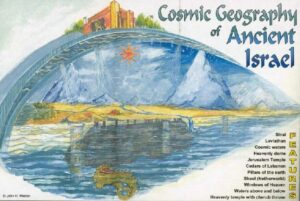
So, we are given an interesting picture of what the firmament looked like at Creation. Which brings me to the subject of Antarctica…
We have been told about the various expeditions to the Arctic and to the Antarctic which took place in the past. Indeed, Robert Falcon Scott comes to mind and his fateful trip to Antarctica in 1912; it has never been a hospitable place to journey to and work in. (Good old Wikipedia can fill you in on Scott’s mission!) Then, in 1938 a secret scientific Nazi mission to the Antarctic, led by Alfred Ritscher, took place and the area explored was re-named Neuschwabenland (New Swabia). There has been much speculation about what the Nazi team were looking for and many rumours about what they found. In June 1961 the Antarctic Treaty came into force with its primary purpose to ensure “in the interests of all mankind that Antarctica shall continue forever to be used exclusively for peaceful purposes and shall not become the scene or object of international discord.” To this end it prohibits military activity, except in support of science; prohibits nuclear explosions and the disposal of nuclear waste; promotes scientific research and the exchange of data; and holds all territorial claims in abeyance. The Treaty applies to the area south of 60° South Latitude, including all ice shelves and islands. What this effectively means is that anyone who wants to visit Antarctica on their own (not part of an authorised tour) would need to jump through impossible barriers in order to make a visit; it is deemed too sensitive an area for the ordinary human to tread on lest they pollute it. This makes me question why this should be the case – but perhaps the things I am going to share might explain this.
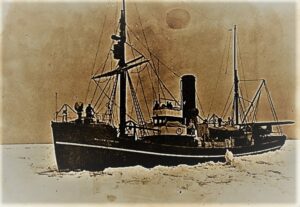
In the 1920’s and 30’s, the research vessel the William Scorseby sailed to Antarctica on a number of scientific missions. Many photographs were taken, most probably by George W. Rayner a biologist on the team (these photos can be viewed on the Victoria Museum of Australia website).
So, what is so interesting about what can be observed in the photographs? Remember that these images are from the 1920/30’s when there was no such thing as digital photography or photoshop; the photographs are raw and unenhanced by the photographer. But what is it that we are looking at? Looking at one particular image, we can look at the original:
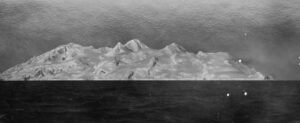
This original photograph found at the Victoria Museum is a curious and intriguing image. In the museum catalogue, this image is attributed to George W. Rayner, photographer; it is, therefore, definitely a photograph and not a painting or some other media. Look at the sky behind the icy mountain and note the texture and ask yourself: what are we looking at? The sky appears to have a very textured, almost metallic appearance. Here is a close-up, again un-doctored, merely cropped to show more detail.
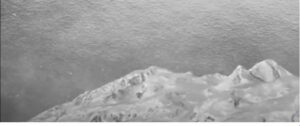
In this unique photograph, are we being shown something that we would not normally get to see? Could a photograph hidden away in the archives of a museum be showing us YHWH’s firmament? The last photograph has been enhanced and leaves us to ponder on the question.
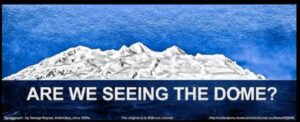
When we read in the bible about YHWH’s throne room, we are given a description of the colours associated with the area which could be seen as part of the firmament:
And above the firmament that was over their heads was the likeness of a throne, as the appearance of a sapphire stone… Ezekiel 1:26
And he that sat was to look upon like a jasper and a sardine stone: and there was a rainbow round about the throne, in sight like unto an emerald… ₆And before the throne there was a sea of glass like unto crystal… Rev 4:3,6
My next piece of research looks at two aspects of the firmament; the firmament formed by heat and the firmament formed by cooling – so Antarctica will be visited again, but first we will be visiting the Libyan desert.
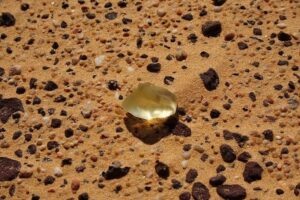
From the Cosmos Magazine we read: In the remote desert of western Egypt, near the Libyan border, lie clues to an ancient cosmic cataclysm. Libyan desert glass is the name given to fragments of canary-yellow glass found scattered over hundreds of kilometres, between giant shifting sand dunes. Interest in Libyan desert glass goes back more than 3,000 years. Among items recovered from King Tut’s burial chamber is a gold and jewel-encrusted breastplate. In the centre sits a beautiful scarab beetle, carved from Libyan desert glass…but how the glass formed has long puzzled scientists. Studies show the Libyan desert glass formed about 29 million years ago. The glass is nearly pure silica, which requires temperatures above 1,600℃ to form, and that is hotter than any igneous rock on Earth. But few mineral relics survived from whatever caused the melting. Within the glass are rare occurrences of high-temperature minerals, including a form of quartz called cristobalite. There are also grains of the mineral zircon, although most have reacted to form a higher-temperature mineral called zirconia. Ideas about how the glass formed include melting during meteorite impact, or melting caused by an airburst from an asteroid or other object burning up high in Earth’s atmosphere.
This Libyan glass still remains a mystery as, even though research has been carried out on the glass, the scientists do not really have conclusive evidence. I ask the question, could Libyan glass have derived from the firmament?
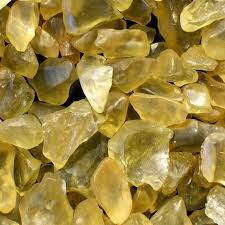
Now we return to the Antarctic and a fascinating story which was told to a Facebook group in May 2017. Of course, it could be a made-up story but it is worth exploring nevertheless as the lady who shared this information felt that she was reading information from a genuine human being. She says that: “I am a member in a Flat Earth group on FB, and someone shared it with the name of the person who did the testimony. It took me a few months before I could get the publisher’s permission on sharing this info.” (Quote from Yupyup0123, March, 2020).

For ease of reading the story, I have transcribed what the member of this group wrote but I also include the original Facebook post above:
I’ve never really believed in Jesus or done the whole church thing, but I think I’ve seen the stuff you guys are talking about here [flat earth truthers group on Facebook]. I just didn’t know what it was at the time. I was in the Army from 1997 to 2000, and I was sent to McMurdo Station in Antarctica. I was a helicopter mechanic and crew chief and they had volunteer tours open for guys to go there and work on the helicopters there. When they asked for volunteers a bunch of us applied but only me and one other guy got accepted. The application process had a bunch of questionnaires that we had to fill out, and we had to sit for a bunch of one-on-one interviews. It was mostly just a bunch of questions about what our interests and beliefs were.
I was sent to McMurdo research station in August 1998. When we weren’t busy de-icing the aircraft and working on them, we had time to hang out with the scientists at the research station. The military unit attached to McMurdo was small and we didn’t have our own separate facilities. We didn’t have a PX, or a media centre. There was no chapel or chaplain. And we didn’t have our own separate mail room. We just had to share the same facilities with the scientists and researchers. So over time I got to be friends with a few of them.
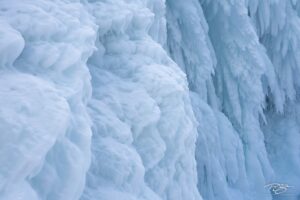
They had two different kinds of ice that they worked on and studied. One kind of ice was the normal kind that we’ve all seen. They took cores of it out of bore holes in the ground. Just like normal ice it was mostly clear or sometimes white, and it would melt into liquid water if it got warm. The whole area of Antarctica is covered in this kind of ice. But that wasn’t their main kind of ice. The only time I ever saw them actually studying normal ice was when a film crew from National Geographic came by. The rest of the time, which was most of the time, the scientists were studying something they called sky ice. This stuff was totally different.
We were never allowed to go into the laboratory areas of the station, because the labs had to be kept super clean and they said it would mess up their work if they risked letting too many people in the lab. But one time one of the researchers that I was friends with showed me a piece of sky ice. You couldn’t touch the stuff with your bare hands because it was so cold. And it wasn’t clear or white like normal ice, it was solid blue. He said that’s why they call it sky ice, because it was the exact same color as sky. We had to wear our thick heavy “going outside” gloves to handle it. The stuff was so cold it would instantly freeze your skin if you touched it. I don’t remember what temperature he said it was. But it was something like hundreds of degrees below zero. WAY colder than the normal ice that was outside.
He had to carry it in a metal bottle that was kinda like a thermos. He let me play with a piece of it for a while. It felt lighter than a piece of normal ice of the same size, like it wasn’t very heavy at all. It almost felt like you could throw it up in the air and it would just float back down, but I didn’t try that. And it was also a little flexible when I tried to bend it. It didn’t break like normal ice would. And even for a small piece, you couldn’t see through it. It was solid blue right from the surface. And here’s the really weird part. It didn’t melt into water. When it got warm, because we had it inside, it just started to shrink. It got smaller and smaller, but my glove never got wet. And there was no water on the floor. The stuff just turned into thin air when it got warm, and vaporized. He said that was the reason why they had to study the stuff right there in Antarctica. You couldn’t take sky ice back to America to study it, because it was almost impossible to keep it cold enough during transit. It would always vaporize into air and you’d have nothing left when you got back to the US. He said Russian scientists had discovered the same problem when they tried to take sky ice back to Russia. So that was why they all had research stations in Antarctica. After maybe 15 minutes of handling the piece of sky ice, it was almost completely gone. Just a tiny little bit was left. And my glove was dry the whole time.
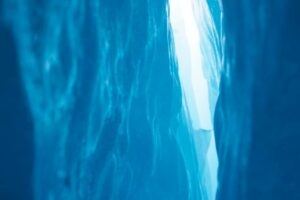
I‘d never seen anything like it before or since. And that’s unusual because I’ve always had an interest in scientific things. I think that’s why I got selected to go to Antarctica, because a big part of the interview was about science and what I believed about things. So I really thought it was cool to see something I’d never heard of before. The whole time I was at McMurdo I heard people talk about “the wall” like that was a special place. It’s pretty common to find ice walls and ice cliffs all over Antarctica. The whole place is ice. But it’s all just normal white or clear ice, so I asked my friend where they get the sky ice from, and he said it comes from “the wall.” I don’t remember exactly how he described it, but apparently there’s a huge wall of sky ice in Antarctica. He said it was hundreds of miles inland from the coast. I never got to see it myself because I was only stationed to McMurdo. I didn’t get to go out on expeditions. He said it was the biggest natural structure in the world. He said that in the 1960’s the US Army had a plan to bore a tunnel into the wall. But they didn’t have a boring machine that could handle super cold temperatures. So they had a whole testing project in Greenland where they developed ice tunnels and invented new boring machines that could operate in super cold temperatures. Like they did this whole big thing in Greenland just for practice. I’m not an expert on that but that’s just what he told me. Then once they had the new boring machine figured out, they brought it to the wall in Antarctica. He said that the machine bored a tunnel, I don’t remember exactly, like 5 or 10 miles into the wall, but that they never broke through the other side of the wall, and that they still don’t know how thick the wall is. Even to this day. And I’m probably not remembering this part correctly, but I think he said that at first, the floor of the tunnel was solid rock, but after a mile or two in, the floor was sky ice. Like it was sky ice underneath after a certain point. Or something like that. And apparently the wall slowly builds itself back up after you cut it, because after a year or so, the tunnel had shrunk smaller all by itself. They had to leave the boring machine inside the wall because the tunnel shrunk too small to get it back out. And after a few decades the tunnel was completely gone. Like, that part of the wall was solid again. He said that now the scientists were trying to use technology to figure out how thick the wall is. He said something about putting earthquake sensors all along the wall, and that somehow you could measure the signal from an earthquake to see how thick the wall is, but he kinda lost me on that part.
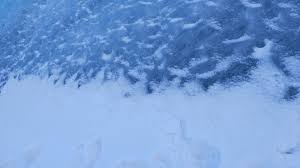
I never really thought about any of that after I left. It was really weird stuff, but I didn’t think it was a big deal at the time. But then a few weeks ago I saw a map of the wall in Antarctica. Except the map was all flat and crazy looking, and, and it showed the wall going all the way up over the whole earth. So since then I’ve been trying to learn more about the sky ice that I saw, and the wall that I heard about, but I can’t find anything at all. So now I’m wondering if there could be a connection here. And that’s how I found this group. So I hope that maybe some part of my experience will help someone figure something out.
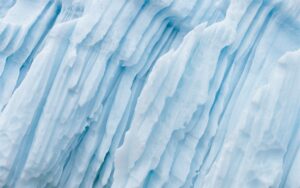
A couple of points from this story I will briefly comment on. Firstly, what was interesting to me was that this man was explicitly asked during his interview about his interests and beliefs. Right from the beginning of the story, the man states that he had no formal religious belief. So, I wonder if those chosen to go to that station in Antarctica needed to have no religion and no controversial interests and, therefore, this applicant fitted the brief nicely. My question would be why this should be…could it be that a bible reader might remember what he had read about a firmament created by YHWH…?
The second point, of course, is the sky ice so beautifully but simply described. One can well believe that such an ice exists and that the treaty back in 1961 would ensure that only a few people would have access to this highly sensitive area and the secret of what the sky ice is hiding. Just think about this…what if everything we have been told about the world we live in is a lie and that the biggest lie of all has been hidden from us in Antarctica and is the one thing that tells us that we have a Creator, YHWH, who built this world especially for us, His children? If the firmament of Genesis Chapter One is still in place, then we are certainly in an enclosed and protected system, watched over by a wonderful creator. With this in mind, I will leave you to ponder with a few verses:
I made the earth and created man on it; it was my hands that stretched out the heavens, and I commanded all their host. Isaiah 45:12
Can a man hide himself in secret places so that I cannot see him? declares the Lord. Do I not fill heaven and earth? declares the Lord. Jeremiah 23:24
“and, lo, I am with you always, even unto the end of the world. Amen.” Matthew 28: 20b
